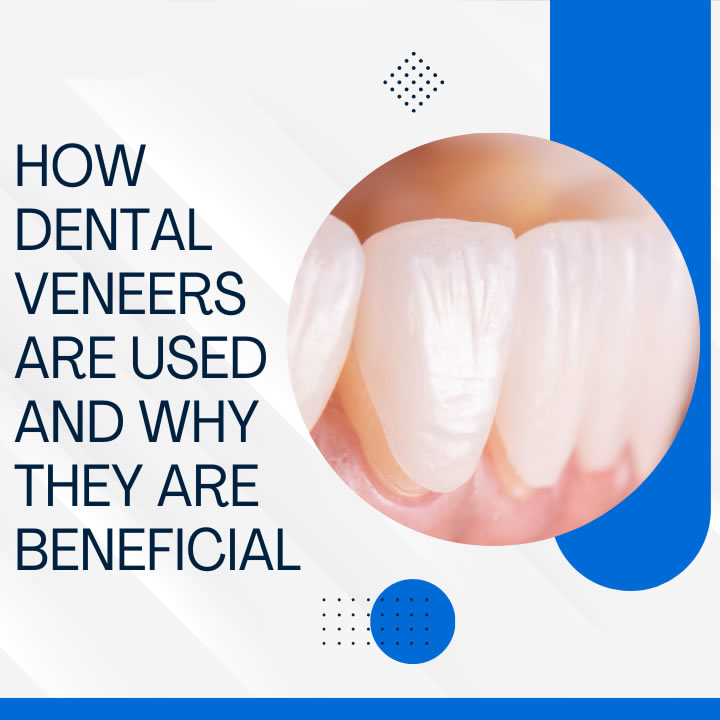People often undergo injuries resulting in tooth damage. For example, chips or cracks.
In addition, some people also might suffer from tooth discoloration. Moreover, tooth chipping, cracking, or breaking can also lead to cavities. And you know or might have heard of the pain it causes!
But, we have the best solution for you. Dental veneers!
What are dental veneers?
Dental veneers are incredibly thin and are tooth-colored shell-like covers. Usually, they are made using resin-composite materials or porcelain and permanently attached to your teeth.
They can cater to numerous dental issues like discolored, chipped, extremely small, or broken teeth.
Often people get one veneer for damaged teeth. However, if you want to improve your smile, you can get six to eight.
You can also take up all-on-4 treatment if the condition of your teeth is extremely poor.
A brief history of veneers
Charles Pincus, a Californian dentist, invented veneer in 1928. He used it to modify the appearance of an actor’s teeth temporarily. Then, in 1937, he designed acrylic veneers and attached them using denture adhesive, but it was temporary.
In 1982, Simonsen and Calamia declared that porcelain carved using HF can be used as a permanent solution.
With passing time, dental veneers have developed to last for 10 to 30 years. However, they might need replacement because of issues like decay, gum line shrinkage, chipping, cracking, leakage, or other damage.
How are dental veneers used?
You can undergo dental veneering for multiple teeth at the same time, but you will need to visit the dentist three times: consultation, make, and apply veneers.
Diagnosis and therapy planning
During the first meeting, you will convey what end results you are expecting by getting veneers. Then, your dentist will examine your teeth conditions, ensure dental veneers are the right thing for you, discuss procedures, and tell you about their limitations.
Preparation
First, the dentist will prepare your teeth for veneer and reshape your teeth surface by removing a little enamel. But, the removed enamel will be equal to the thickness of the veneer that is to be fixed. For this, you can also opt for numbing the area before reshaping.
Then, the dentist will take an impression of your teeth and send it to the laboratory to make veneers.
It requires approximately two to four weeks to prepare veneers. However, till then, you can use temporary veneers.
Bonding
The dentist will place and remove the veneer and trim it over and again until it gets the perfect shape of your tooth. Then, after size adjustment, the dentist will prepare your tooth by cleaning, polishing, and etching to make it ready to take up veneer.
Etching will make the teeth’ surface rough, which will aid in strengthening the bonding procedure. Then, the dentist will choose cement according to your tooth color and permanently fix the veneer with it.
After placing a veneer on your tooth, s/he will radiate a beam of special light on your tooth. This will trigger and activate the chemicals present in the cement and harden it faster.
Finally, the dentist will remove extra cement, check your bite, and make required modifications. Furthermore, the dentist might also ask for a follow-up visit to ensure the condition of the veneer and your gums.
What are the benefits of dental veneers?
Less enamel removal
The best thing about dental veneers that make them the diamond of the first water is that you do not need to forgo your natural teeth. Unlike other dental treatments, you only need to remove a little enamel to allow veneers to adhere to your teeth.
This is monumental because once your enamel is gone, your teeth become vulnerable to decay and sensitivity.
Fend off discoloration
Everyone loves whiter teeth, do they not? However, natural tooth enamel is more prone to discoloration and requires regular whitening treatment. On the contrary, dental veneers resist discoloration effectively and keep your smile white and fresh.
Plus, if you take care of the food you eat, you can maintain the whiteness for up to a decade.
It covers several dental issues
People fix minor issues like gaps through bonding, discoloration through bleaching, and chips and cracks through the filling.
However, dental veneers provide a better option. They cover cosmetic imperfections on your natural teeth, including chips, cracks, poor color, and other minor issues. The major benefit of using veneers over other treatments is that it lasts longer and is more durable.
Requires less care and maintenance
Firstly, dental veneers are not porous and can combat damage and stains in a better way.
Hence, protect your natural teeth for a longer time.
Secondly, it does not require special maintenance. Just regular brushing and flossing once a day.
They look natural & they feel natural
A dentist makes an impression on your teeth, and veneers are custom-made in the laboratory, especially for you. Hence, they will naturally fit your teeth.
Furthermore, the dentist will sculpt it to make it a perfect fit for your teeth. As a result, veneers look and feel more natural.
It is a faster solution to cosmetic dental issues
Cosmic dentistry involves multiple options to solve minor dental issues like uneven teeth surface, gaps, and cracks.
Moreover, it also calls for orthodontic interference to bring teeth in the correct position. However, such procedures require considerable time and also cause discomfort.
Dental veneers, on the contrary, are a quicker solution. It does not require altering your natural teeth conditions but creates a pleasing disguise. Some dental issues are not a major threat to your health and can be fixed by dental veneers.
Conclusion
Dental veneers might not be the ideal solution for every individual. But, they offer easy, long-lasting, and safe treatment options.
Plus, they do not require maintenance, making them a favorable and trouble-free choice.
So, select dental veneers for minor dental problems and get a brighter, shinier, and perfect smile!

